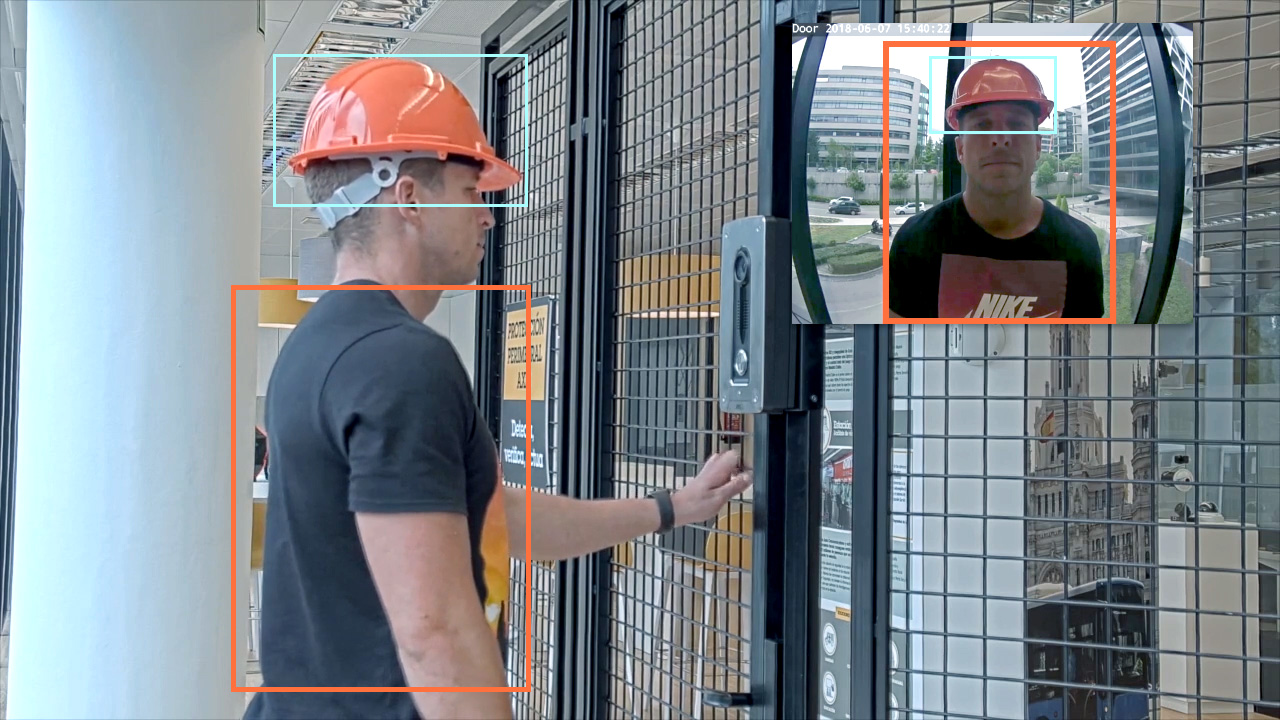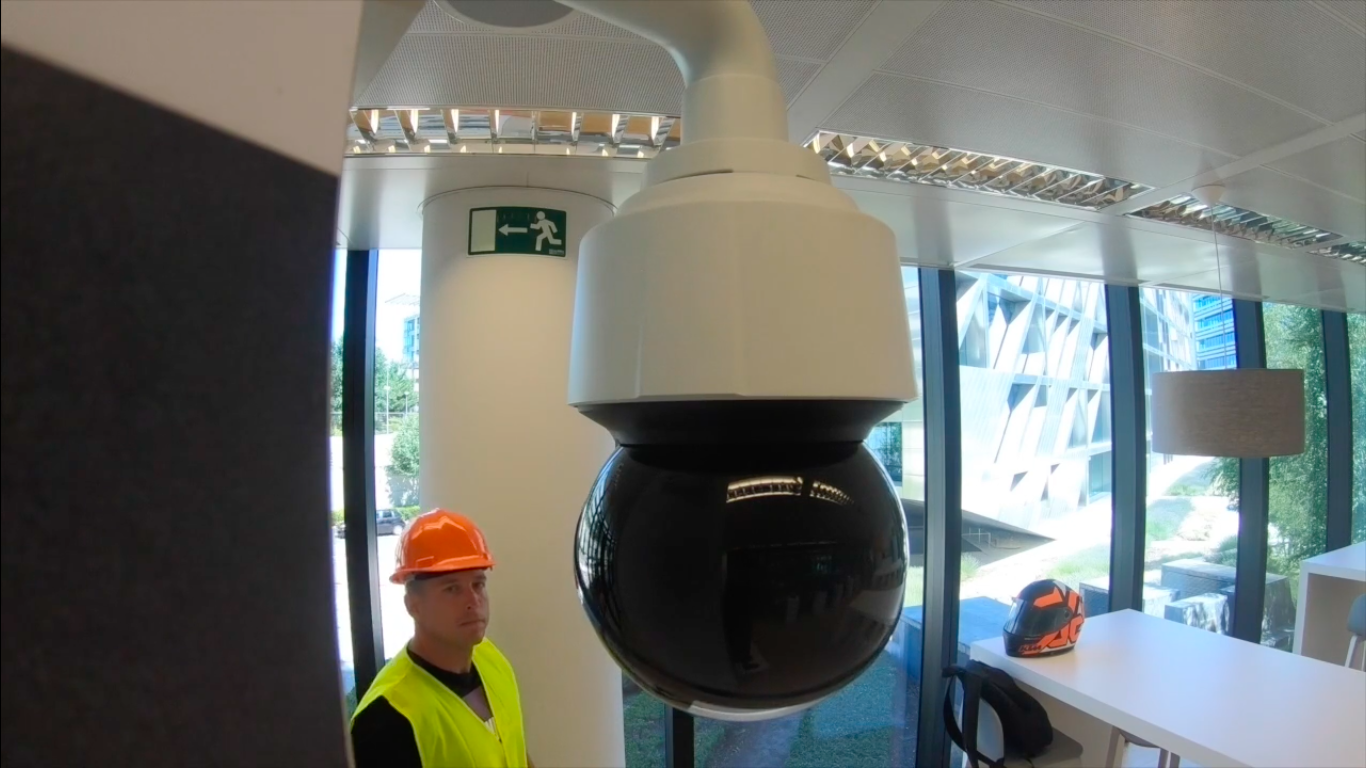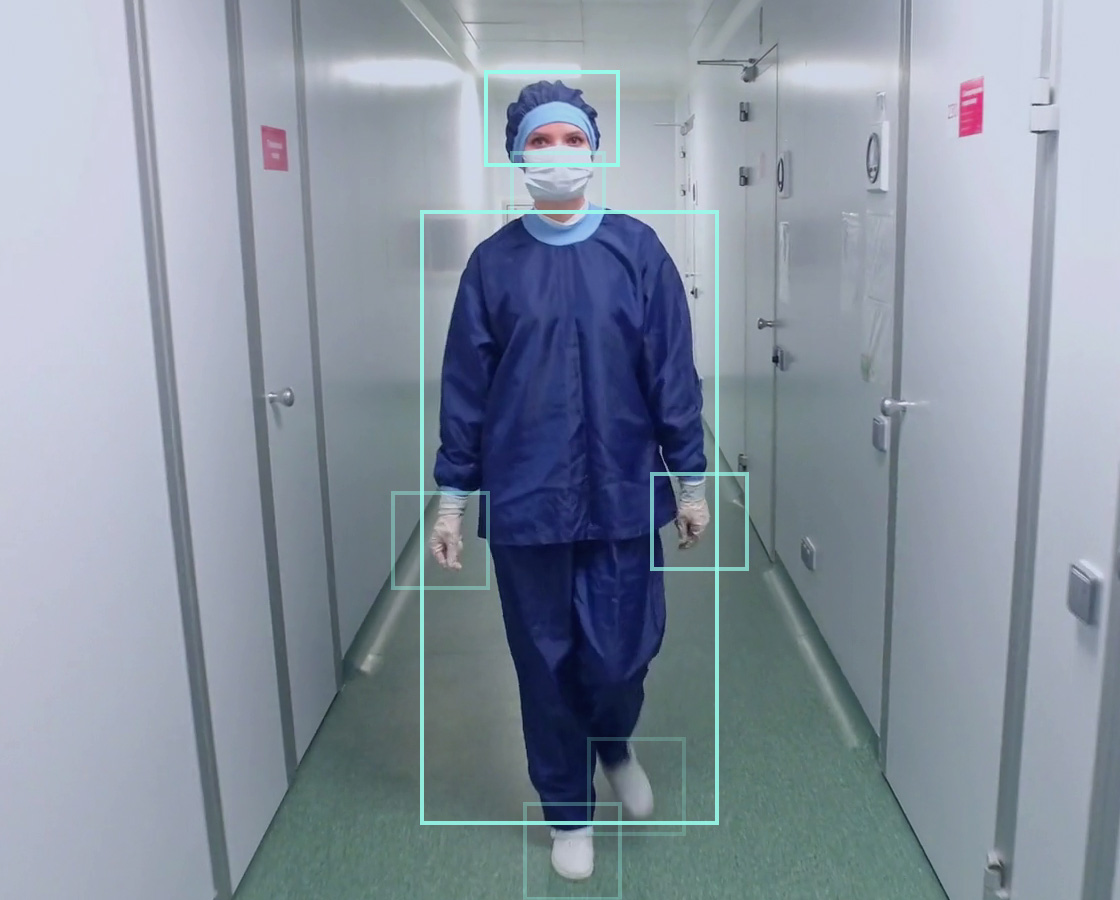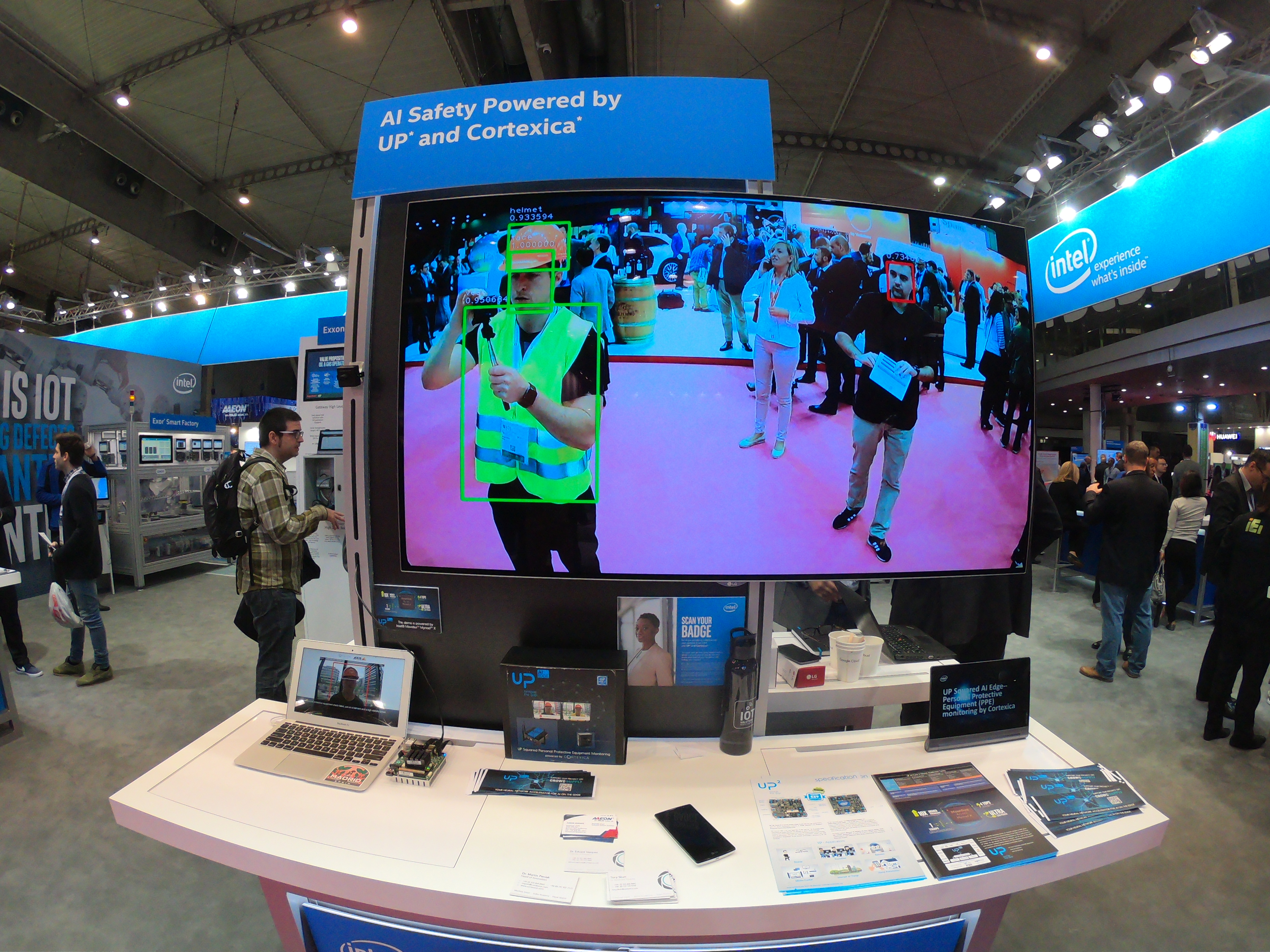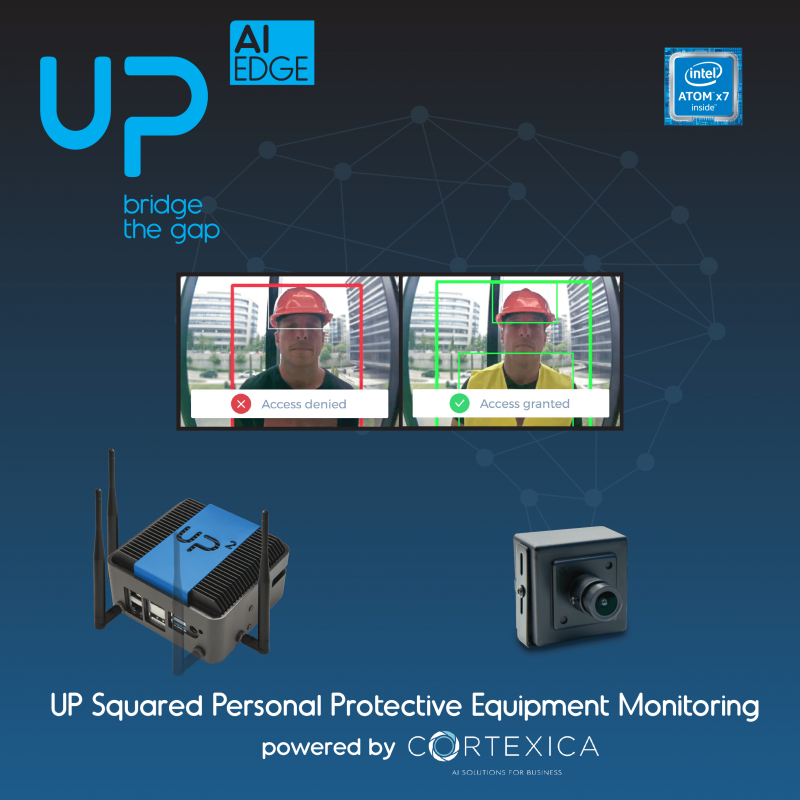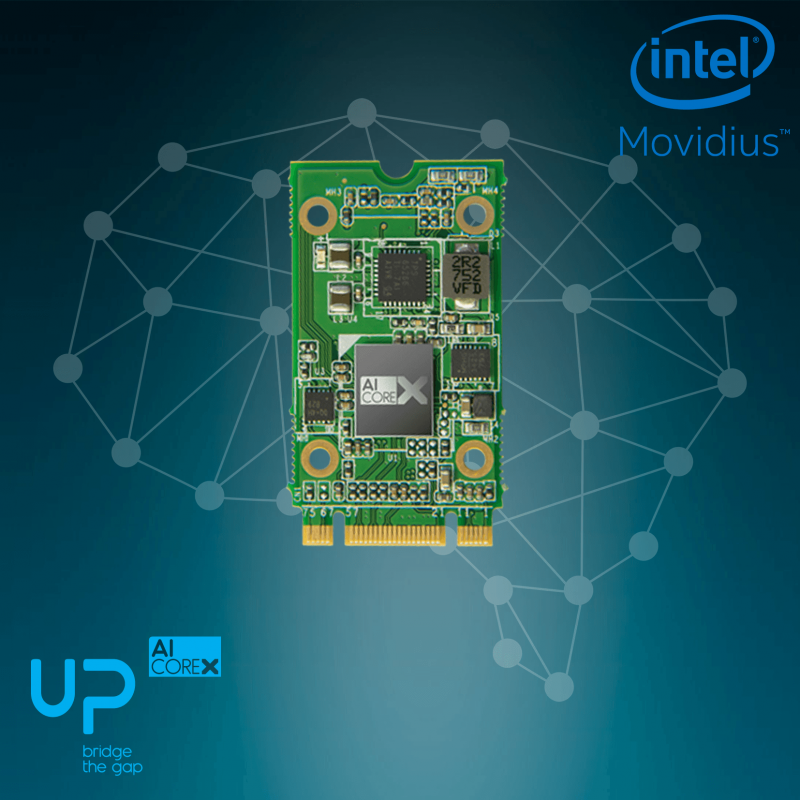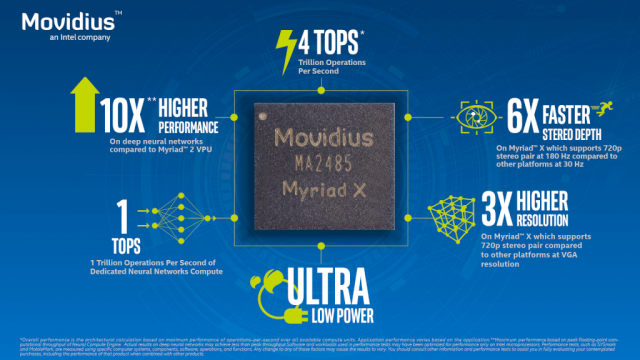powered by the latest ultra-low-power high-performance Intel Myriad X VPU
Martin Peniak, PhD — Innovation Department
martin@cortexica.com
Personal Protective Equipment (PPE) is the equipment that protects the user against health or safety risks. Not wearing PPE dramatically increases the chances of injuries and in many situations also of financial losses due to fines for injuries and death of workers as well as contamination caused by not wearing gloves, hairnets, shoe covers, etc. Recent advancements in edge computing hardware coupled with ever more efficient software have enabled novel solutions with the potential to prevent injuries, save lives as well as money and time. This document describes the world’s first edge compute solution for PPE ingress and real- time PPE compliance monitoring.
Cortexica has been at the forefront of the machine vision revolution. We have reverse-engineered parts of the human visual cortex, which allowed us to develop a powerful image search engine nowadays widely used to solve many real-world problems. Partnering with various world-leading businesses allows us to identify numerous real-world problems that can be addressed by applying machine vision methods. Some of the solutions to these problems are often very specific while others are widely applicable and have the potential to save lives. Probably the best example of this is our family of solutions designed for PPE ingress and real-time PPE compliance monitoring (see Figures 1 and 2).
PPE is designed to protect users from serious injuries or illnesses resulting from a physical, mechanical, electrical, chemical or radiological contact. The importance of PPE is paramount because it serves as the last line of defence against an injury or death. Unfortunately, studies have demonstrated that 98% of workers said they have seen others not wearing PPE when they should have been and 30% of those said this happens regularly. Head injuries, constituting 9% of all injuries, can be fatal and yet 84% of these were caused by not wearing a helmet [1]. Most of these injuries could have been prevented had there been a system in place that would continuously monitor for PPE compliance.
Recent advancements in edge computing gave raise to novel applications designed to process data right at its source effectively minimising latency and allowing real-time processing. This paper presents a solution for PPE ingress and compliance monitoring that runs in real-time and entirely on the edge.
Fig.1 - Cortexica PPE ingress solution installed at Axis Experience Centre, Madrid. This solution detects if a person is wearing a helmet and a high visibility jacket. A person is only allowed to enter a workplace once all the PPE checks have been approved.
Fig.2 - Cortexica real-time PPE compliance monitoring solution installed at Axis Experience Centre, Madrid. This solution is continuously scanning workplace and raises an alarm if a person is not wearing a helmet and a high visibility jacket. The scanning is done using Axis pan/tilt/zoom (PTZ) camera and Axis radar capable of detecting motion within 50 meters range. The radar detects motion and then automatically moves the camera to the point of interest.
Fig.3 - Cortexica PPE ingress solution designed for a pharmaceutical company. This solution detects if an employee is wearing boots, overall, gloves, hairnet, beardnet, head cover and transparent glasses. An employee is only allowed to enter a workplace once all the PPE checks have been approved.
Fig.4 - Cortexica was the first and only company to present a working demonstration utilising the latest Intel Myriad X VPU. This image shows one of our AI Safety (PPE) demos at the Intel booth. The second demo was installed at AAEON (Asus asoc.) stand.
It takes more than algorithms to deliver an AI driven product that solves a real-life problem. Working in partnership with UP we have developed UP Squared AI Edge-PPE monitoring, a development kit (see Figure 5) for health and safety professionals to create proof of concepts (POC) to full blown AI applications ready for live deployment. The development kit offers the following:
- Real-time video analysis with advanced algorithms and machine learning to ensure employees are wearing the correct PPE for their working environment
- Parallel detection of PPE, Face, Person, and Body parts leveraging CPU, GPU and VPU processors
- Powered by the latest ultra-low-power high-performance Intel Myriad X VPU (see Figures 6 and 7)
- Single image mode
- Real-time mode
- Made for POCs
Fig.5 - The PPE monitoring development kit is available to purchase as an off-the-shelf solution, complete with hardware and software configuration, and detailed step-by-step guides to help you start prototyping your next AI monitoring or video surveillance project. For health and safety professions, this development kit assists the creation of a PPE monitoring system, and for industries at large, an AI driven surveillance application.
Fig.6 - The AI CORE X is powered by the recently released Intel® Movidius Myriad X, a third-generation vision processing unit (VPU) that is the first in its class to include a Neural Compute Engine – a dedicated hardware accelerator for deep neural networks, trainable with industry-standard tools.
Fig.7 - Myriad™X features the all-new Neural Compute Engine - a purpose-built hardware accelerator designed to dramatically increase performance of deep neural networks without compromising the low power characteristics of the Myriad VPU product line. Featuring an array of MAC blocks and directly interfacing with the intelligent memory fabric, the Neural Compute Engine is able to rapidly perform the calculations necessary for deep inference without hitting the so-called "data wall" bottleneck encountered by other processor designs. Combining the neural network performance of the 16 proprietary SHAVE cores with the neural compute engine, Myriad X delivers 10X the performance compared to previous generations.
This section provides a detailed description of the software architecture, its components and their integration through the REST API.
Fig.8 - Software architecture diagram showing the PPE service and the demo sample. The PPE service receives an image and a JSON specifying simple options and returns a JSON with detection results containing bounding boxes, corresponding object classes and the time in milliseconds that it took to run a single inference.
The PPE service is a C++ application running a HTTP server with a REST API. This service is able to run inference on multiple deep learning models in parallel on all the available CPU, GPU and VPU processors to obtain the results in the shortest time possible. The service starts automatically running after the operating system is initialised and then continues running on the port 8081. The REST API has the following endpoints that can be used to interact with the service:
- /ppe – single image mode allowing maximum of 30 requests followed by 90 seconds timeout
- /continuous-ppe – continuous mode allowing unlimited number of images within 60 seconds followed by 90 seconds timeout
Both endpoints accept multipart/form-data POST requests containing an image and a JSON specifying the query options. For example the following JSON options example enables all the four models with thresholds set to 60% confidence. The threshold parameters are optional and if no threshold is set then the default value of 50% confidence will be applied.
{
“detectPPE”: true,
“detectFaces”: true,
“detectPersons”: true,
“detectBodyParts”: true,
“ppeThreshold”: 0.6,
“faceThreshold”: 0.6,
“personThreshold”: 0.6,
“bodyPartsThreshold”: 0.6
}Since the PPE service provides the REST interface the integration with your own application is very easy and can be also done accross the network. The sample application described in the next section shows how to achieve this integration using C++ but you can use any programming language or method. For example, here is a curl request code:
curl
−−request POST
−−url http://localhost:8081/ppe
−−header ’content−type:multipart/form−data; boundary=−−−−WebKitFormBoundary’
−−form’ options={
“detectPPE “ : true,
“detectFaces “ : true,
“detectPersons “ : true,
“detectBodyParts “ : true,
“ppeThreshold “ : 0.6,
“faceThreshold “ : 0.6,
“personThreshold “ : 0.6,
“bodyPartsThreshold “ : 0.6}’
−−form image=@example.pngThe following snipped shows a JSON results example:
{
"ms": 49,
"result": [
{
"categoryClass": "vest",
"confidence": 0.92055,
"xEnd": 0.82968,
"xStart": 0.4789,
"yEnd": 0.99027,
"yStart": 0.36382
},
{
"categoryClass": "helmet",
"confidence": 0.95361,
"xEnd": 0.74687,
"xStart": 0.58749,
"yEnd": 0.21527,
"yStart": 0.03449
},
{
"categoryClass": "face",
"confidence": 1,
"xEnd": 0.92653,
"xStart": 0.61093,
"yEnd": 0.41527,
"yStart": 0.13194
}
],
"status": 0
}where ms is inference time in milliseconds, categoryClass is the class of the detected object, confidence is the detection confidence level (e.g. 0.95 =95% confidence) and xStart, xEnd, yStart, yEnd define the bounding boxes of the detected object. When multiplied with the image dimensions, pixel coordinates can be obtained. For example, a bounding box in OpenCV can be created using:
cv::Rect rect(cv::Point(xStart * width, yStart * height), cv::Point(xEnd * width, yEnd * height))
This sample application was written in C++ to demonstrate how to send queries to and receive results from the PPE service via the REST API. The application source code is located under /home/upsquared/cortexica/sample/ and the compiled binary under the bin subdirectory. The application depends only on OpenCV and Poco libraries. To compile the sample run the following commands:
$ cd /home/upsquared/cortexica/sample/
$ mkdir build
$ cd build
$ source /opt/intel/computer_vision_sdk/bin/setupvars.sh
$ cmake ..
$ makeYou can run the application using as follows:
$ bin/sampleHere is an example of sample application front-end showing the detection results plotted as bounding boxes. The four sliders at the top are used to adjust the sensitivity of the models or to turn them off completely.
The development kit has been primarily designed to enable the evaluation of our technology and to facilitate seamless integration with other applications with the goal of creating POCs. If a client is satisfied with the POC and wants to use it for commercial purposes then the client should contact us to obtain a license and a production grade software with models optimised for that specific use case. As a consequence, using this development kit for commercial purposes is prohibited. The following measures have been implemented to prevent unauthorised use of this development kit:
- The PPE service will expire in one year from its first use
- Models have been encrypted to prevent unauthorised use
- Single image mode is restricted to a maximum of 30 consecutive requests
- There is a 90 seconds time out afterwards during which no requests can be made
- Additional requests can be made after this time out has finished
- Real-time mode allows unlimited number of frames within a 60 seconds period
- There is a 90 seconds time out after these 20 seconds during which no requests can be made
- Additional requests can be made after this time out has finished
[1] U.S. Department of Labor, Bureau of Labor Statistics, Accidents Involving Head Injuries, Report 605, (Washington, D.C., Government Printing Office, July 1980) p. 1

